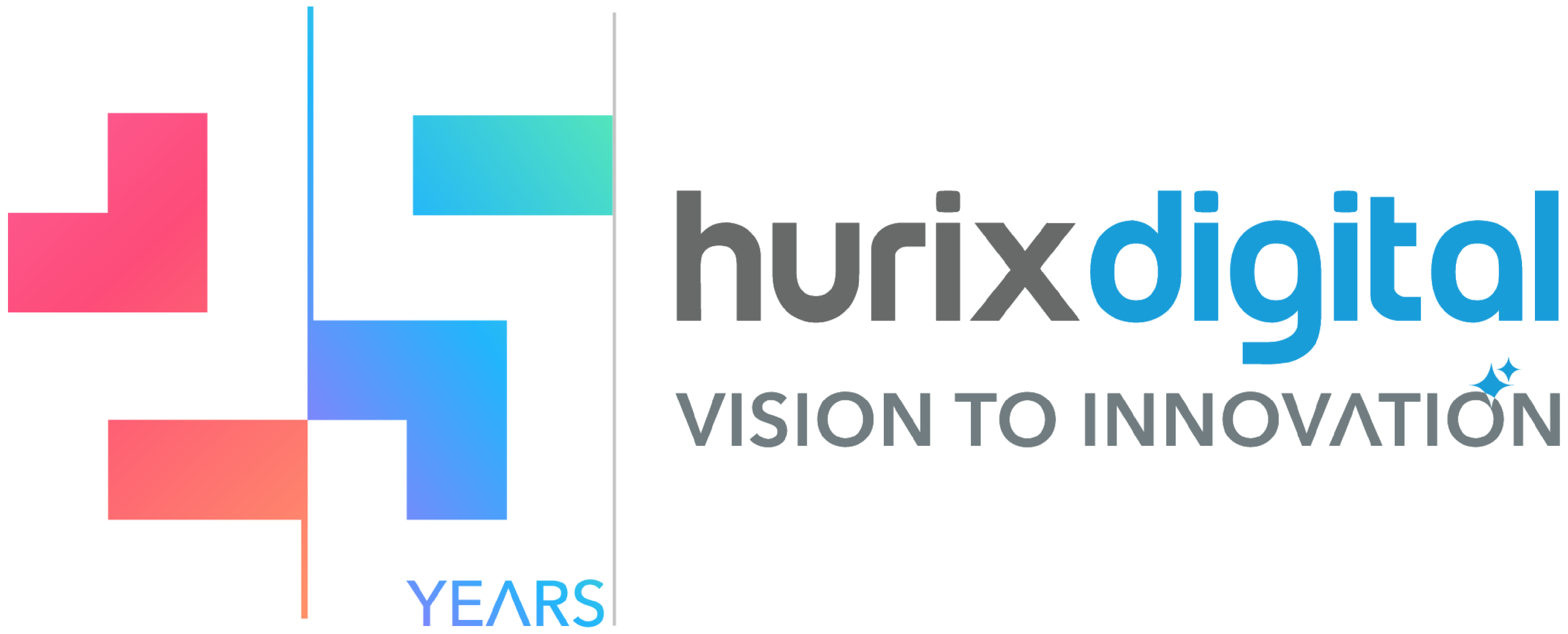White-Labelling, in the context of digital content and learning solutions, refers to the practice of rebranding a product or service developed by Hurix Digital, removing our branding, and applying your own. This allows you to offer a comprehensive suite of learning technologies, content development services, and digital publishing solutions under your own brand name, enhancing your market presence and building customer loyalty without the significant investment and time required to develop these solutions from scratch. Discover how Hurix Digital’s white-labelling solutions can empower your brand today.
What is White-Labelling?
White-labelling (sometimes written as white labeling) refers to the practice of a company removing its own branding and logo from a product or service and instead applying the branding requested by the purchaser. Essentially, it’s a ready-made solution sold by one company that another company then rebrands to make it appear as their own.
Think of it like this: you buy a generic bottle of shampoo. The manufacturer made the shampoo, but you put your own label on it with your brand name and logo. Customers then perceive it as your product, even though you didn’t actually develop or manufacture it.
In the digital learning and content solutions space, white-labelling is common for learning management systems (LMS), eLearning platforms, and digital content creation tools. For example, Hurix Digital might develop a sophisticated eLearning platform that other companies can then white-label. This allows them to offer a branded learning solution to their clients without investing heavily in development.
Key benefits of white-labelling include:
- Faster time-to-market
- Reduced development costs
- Increased brand recognition
- Focus on core competencies
By leveraging white-labelled solutions, businesses can rapidly expand their offerings and strengthen their brand image.
Why is White-Labelling Important?
White-labelling offers significant advantages for businesses seeking to expand their service offerings without the overhead of developing proprietary solutions. Its importance stems from several key factors:
Cost-Effectiveness: Developing software or services in-house requires substantial investment in research, development, and ongoing maintenance. White-labelling eliminates these costs, allowing companies to leverage pre-built, reliable solutions at a fraction of the price. This frees up resources for core business functions like marketing and sales.
Faster Time-to-Market: Launching new services can be a lengthy process. White-labelling dramatically accelerates this process. By reselling existing products under your brand, you can quickly introduce new offerings to your customers and gain a competitive edge.
Enhanced Brand Recognition: White-labelled solutions allow you to maintain consistent branding across all your services. This strengthens brand recognition and builds customer trust, as your customers perceive a unified and comprehensive service offering from a single, reputable source.
Focus on Core Competencies: Outsourcing the development and maintenance of specific solutions enables your team to concentrate on their core competencies and strategic initiatives. This improved focus leads to greater efficiency and innovation in areas where your company excels.
Scalability and Flexibility: As your business grows, white-labelled solutions can easily scale to meet increasing demands. This flexibility ensures that you can adapt to changing market conditions and customer needs without significant disruptions or resource constraints.
In summary, white-labelling provides a strategic pathway to expand service offerings, reduce costs, enhance brand presence, and improve overall business efficiency, making it a crucial strategy for growth-oriented businesses.
How Does White-Labelling Work?
White-labelling, also known as private labelling, is a business model where a company (the white-label provider) produces a product or service, and another company (the reseller) rebrands it as their own. The reseller then sells the product or service to its customers under their own brand name, without any indication of the original manufacturer.
The white-labelling process typically involves these key steps:
- Product/Service Creation: The white-label provider develops a fully functional product or service.
- Customization Options: The provider usually offers some level of customization. This could include changing the product’s appearance (logo, colors, design), integrating it into existing systems, or adding specific features. The extent of customization varies depending on the provider and the product.
- Branding & Rebranding: The reseller removes all branding from the original product and replaces it with their own branding. This includes logos, trademarks, and any other identifying marks.
- Marketing & Sales: The reseller is responsible for marketing and selling the white-labelled product or service to their target audience. They set the price, create marketing materials, and manage customer support.
- Ongoing Support (Optional): Some white-label providers offer ongoing technical support and updates, while others leave this responsibility to the reseller.
In essence, white-labelling allows companies to offer a product or service without the significant investment and resources required for development and manufacturing. It’s a strategic partnership that benefits both the provider, who gains access to a wider market, and the reseller, who can expand their product offerings quickly and efficiently while focusing on their core competencies.
White-Labelling: Examples from Leading Brands
White-labelling is a powerful strategy employed by many leading brands to expand their offerings and reach new markets efficiently. It involves purchasing a product or service developed by one company (the provider) and rebranding it as your own.
Amazon Web Services (AWS): While not a direct consumer-facing example, AWS exemplifies B2B white-labelling. Numerous companies build their software applications and services on AWS infrastructure. These companies leverage AWS’s reliable and scalable infrastructure without needing to invest heavily in building their own. End-users are typically unaware that AWS is powering the backend.
Shopify: Shopify allows entrepreneurs to create online stores using their platform. While Shopify’s branding is visible, businesses can customize their storefront extensively and sell products under their own brand name. The underlying e-commerce infrastructure is white-labelled, enabling merchants to focus on product sourcing, marketing, and customer service.
Fitness Apps: Many fitness apps available in app stores are actually white-labelled versions of existing platforms. A company specializing in fitness app development creates the core functionality, and other businesses (e.g., gyms, personal trainers) can customize the app with their logo, branding, and content, offering a personalized experience to their clients without the complexities of building an app from scratch.
Private Label Credit Cards: Retail giants often partner with financial institutions to offer private label credit cards. While the credit card bears the retailer’s branding and offers rewards specific to their store, the underlying credit processing and management are handled by the financial institution, effectively white-labelling their services.
These examples demonstrate the versatility of white-labelling across diverse industries, allowing companies to quickly enter new markets, expand product lines, and focus on their core competencies.
Key Benefits of White-Labelling
White-labelling offers a multitude of benefits for businesses seeking to expand their offerings and strengthen their brand without the overhead of development. By utilizing white-labelled solutions, companies can:
- Accelerate Market Entry: Launch new products or services quickly. White-labelling bypasses lengthy development cycles, enabling faster time-to-market and a competitive edge.
- Reduce Development Costs: Eliminate the need for significant investment in research, development, and infrastructure. Focus resources on core competencies while leveraging pre-built, tested solutions.
- Strengthen Brand Identity: Seamlessly integrate white-labelled products or services under your brand name and logo, reinforcing brand recognition and customer loyalty.
- Expand Product Portfolio: Offer a wider range of solutions without the complexity of building them from scratch. White-labelling allows for diversification and increased revenue streams.
- Focus on Core Business: Concentrate internal resources on sales, marketing, and customer service, rather than development and maintenance. This streamlined approach improves efficiency and overall business performance.
- Enhance Customer Satisfaction: Provide a more comprehensive and integrated solution to customers, improving their experience and fostering long-term relationships.
- Maintain Control: While relying on a third-party provider, retain control over branding, pricing, and marketing strategies.
In essence, white-labelling is a strategic approach that allows businesses to leverage existing technologies and expertise to enhance their brand, expand their offerings, and achieve rapid growth.
Common Misconceptions Around White-Labelling
White-labelling is often misunderstood. Here, we debunk some common misconceptions:
Misconception 1: White-labelling is only for startups.
Reality: While startups benefit from leveraging established solutions, white-labelling is also valuable for large enterprises. It allows them to rapidly expand their service offerings, enter new markets, or focus on core competencies without extensive development.
Misconception 2: White-labelling means low quality.
Reality: White-labelled products and services can be of exceptional quality. The quality depends on the provider. Reputable white-label providers invest heavily in development and testing to ensure their offerings meet high standards. Due diligence is key when selecting a partner.
Misconception 3: White-labelling eliminates branding opportunities.
Reality: Quite the opposite! White-labelling enhances your brand. You’re presenting a solution under your name, reinforcing brand recognition and customer loyalty. It lets you control the customer experience and build trust.
Misconception 4: White-labelling is always cheaper than building in-house.
Reality: While often cost-effective, the ROI depends on your specific needs. Factor in long-term maintenance, scalability, and potential customisations. Sometimes in-house development might be more suitable, but white-labelling offers faster time-to-market and reduced initial investment in many cases.
Misconception 5: White-labelling is a one-size-fits-all solution.
Reality: While many white-label products offer flexibility, it’s crucial to assess whether the solution aligns with your specific requirements. Look for providers offering customisation options or integrations to ensure a seamless fit with your existing infrastructure.
 Upcoming Masterclass | Build an Army of Brand Evangelists using Training & Development | November 20th, 8:30 AM PDT | 11:30 AM EDT | 10:00 PM IST
Upcoming Masterclass | Build an Army of Brand Evangelists using Training & Development | November 20th, 8:30 AM PDT | 11:30 AM EDT | 10:00 PM IST
